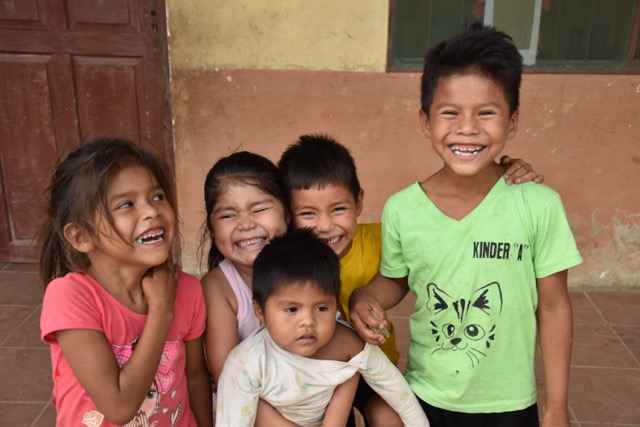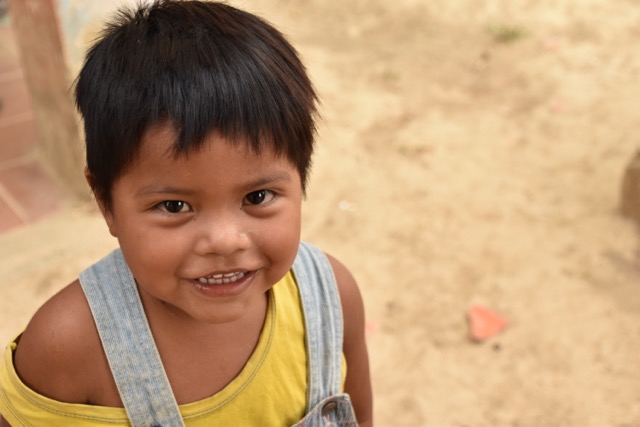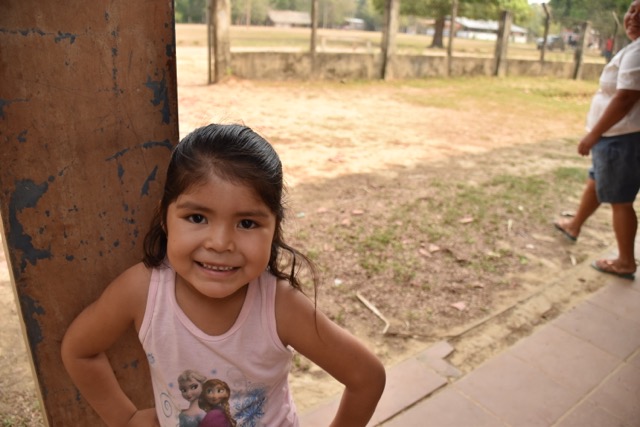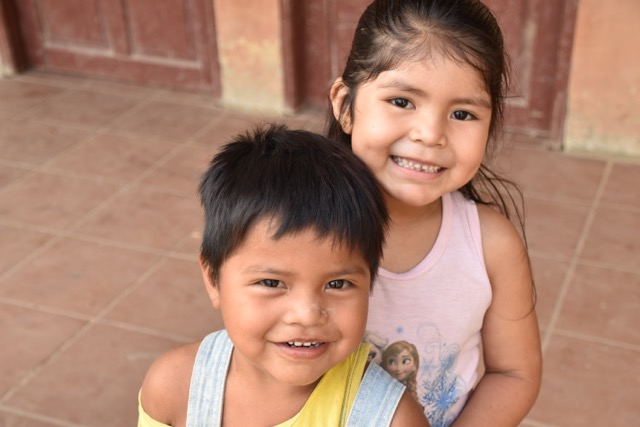
This year I only went to Bolivia as we now have 13 community projects there and because they are so remote it takes 10 very full days to visit all of them and that is with sleeping in the communities to save driving time. Also, this year a family of Alma supporters from Nelson B.C. joined us. So Ian, our two program directors Coqui and Maria Lena, and the others (we were 8 in total) squeezed into the cab and back of a pick-up truck for the long, hot drive out to the communities.Things didn’t start well as we got lost on the first night in the jungle/savannah and rather than arriving at 11PM (5 hours of driving) we got in at 2AM (8 hours).
As always though, the trials and tribulations of traveling here were overwhelmed by the love shown to us by children and parents everywhere we went. The agenda was similar every day: we would sit in on the classroom for a couple of hours, meet with parents for a couple of hours and then eat with the parents and sometimes with the kids for a couple of hours.
In Manguita, our teacher Hernan (in his third year with us) pulled off a pretty much perfect class, which considering the challenge of teaching critical thinking to a multi-grade classroom (ages 5-11) and a variety of learning abilities was very impressive. He started with a fun game activity that had the kids making decisions on local foods and nutrition and ended with them considering different local dishes to prepare.

The parent meetings are always moving. Parents get emotional when they talk about the progress their kids are making thanks to the Alma program. They marvel at their children’s abilities to use computers effectively and feel involved in their kid’s education because they were all interviewed by them to come up with source material for the projects. At every stop but one, the communities have fulfilled their obligation to the project – usually building a classroom or dwelling for our teacher and always helping their children with support material our teachers give them.
I was constantly reminded of how the communities have leveraged the Alma project and our “pull” with politicians to exact government money into their often-neglected communities. These social and economic benefits, along with the nudge to community cohesion and capacitation are unintended consequences of our work.

All of the communities made us huge meals of local foods; Surubi- a huge fish caught in local waters, chancho (wild pig), rice, yucca, and beans. My favourite is Masaco which is ground platano and then pan-fried with whatever is around (sometimes leftover meat, usually cheese).
Perhaps the most unusual experience was a few weeks ago. The students (high school age) in one of our communities started suddenly suffering strange ailments (fainting, loss of use of limbs, daydreams of being chased by a woman in white) and when they didn’t cease went to Trinidad to a clinic where doctors couldn’t determine anything. They were told by some religious folks that they were “possessed” so they underwent a week-long exorcism and now the kids are better (it made the news in Trinidad). But when we were there they requested a meeting with Ian and I and no parents, teachers or other Alma staff. Listening to these kids and seeing how well Ian managed their emotions and showed them the same trust and love that they were showing us made for a very moving experience.
It’s clear to me that what we are doing down here goes way beyond traditional “education”.

